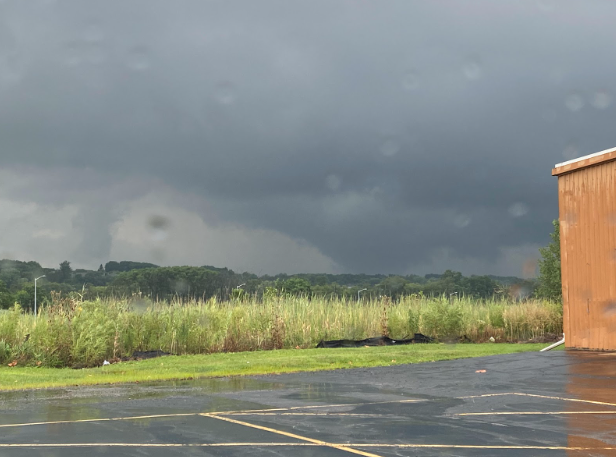The trouble with low Chicagoland tornado numbers
Photo By Nathan Lapitan
On Aug. 9, 2021, a significantly large tornado touched down near St. Charles, causing no known damage. This was the last reported tornado in DeKalb, Kane and Kendall counties, as zero confirmed tornadoes have been reported in 2022.
In years past, Chicagoland saw an average of eight tornadoes per year, with western Chicagoland seeing an average of three per year, according to the National Weather Service. However, in 2022, the immediate areas of DeKalb, Kane and Kendall counties have seen zero tornadoes. This could be a cause for concern as something extremely bad could be hiding around the corner.
Longtime Chief Meteorologist of WGN News Tom Skilling explains why Chicagoland has seen a lack of tornadoes in 2022 and what this could mean for the area.
“It’s just a matter of the correct ingredients coming together at the right place at the right time. Wind shear and CAPE (Convective Available Potential Energy) values are the two main ingredients for tornado development,” Skilling said. “We barely saw any days like that, however, there have been some days with those ingredients this year, like June 13 and July 23. Thankfully nothing serious came from those events. It’s just a matter of time before a completely maxed out CAPE day, with numbers up to near 5000 joules per kilogram and wind shear, which is what makes storms spin, maxed out at near 100.”
Skilling also said that the entire Chicagoland area is overdue for a disastrous EF4+ tornado. The last time one occurred in the Chicagoland area was in Rochelle on April 9, 2015.
“It’s not a matter of, ‘Why hasn’t a major tornado happened for a long time?’ It’s just a matter of, ‘When will it happen?’” Skilling said.
If this major tornado happens in a populated area, especially with the population of the western suburbs increasing, there could be an even larger disaster than what happened in Joplin, MO, on May 22, 2011, which was the costliest tornado in U.S. history. The last time the immediate Chicagoland area has seen an EF4+ tornado was on Aug. 28, 1990, when an F5 tornado hit the town of Plainfield, just 35 miles southwest of downtown Chicago, killing 29 people.
As people are moving out of Chicago and into the western suburbs, the population density is continuing to increase, which is another sign of disaster waiting around the corner.
Gino Izzi, the Senior Meteorologist of the National Weather Service-Chicago office, explains in a recent interview why people should always be prepared for a similar event, like what happened with the Plainfield disaster.
“As the population density of the western suburbs continues to go up, the building blocks of a Joplin-type disaster continue to grow and grow. It’s just a matter of time before that tower of blocks comes crumbling down, and an EF5 tornado touches down and kills several people,” Izzi said.
Both Izzi and Skilling try to emphasize, either on TV or on social media, that it’s very important that people always pay attention to the weather, especially on days when severe weather is either likely or expected.
“My job, along with other people in the severe weather business, is to keep people safe before severe weather strikes,” Skilling said. “It’s very important that when severe weather strikes, it should be a top priority that people pay attention to the weather whenever the worst happens.”

Name: Nathan Lapitan
Position: Meteorologist
My favorite…
Movie: Twister
Show: Storm Chasers
Animal: Cat
Hobby:...







